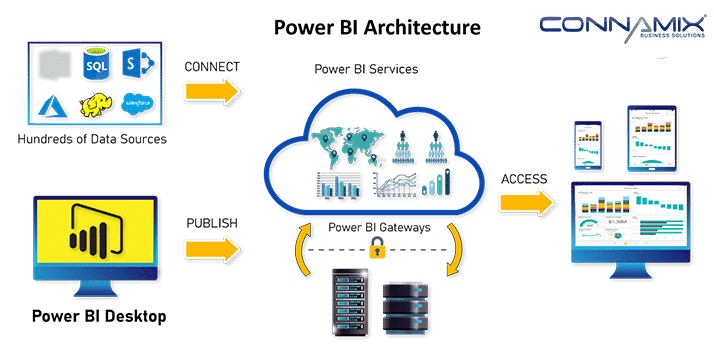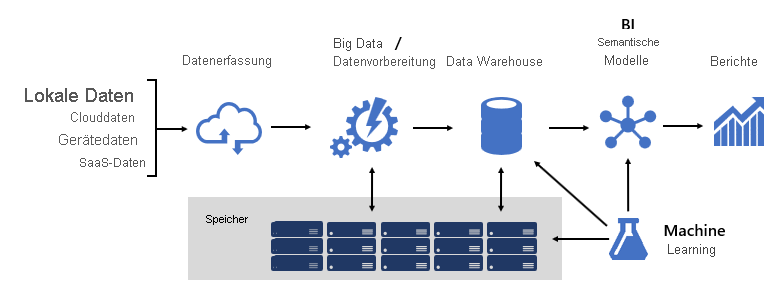Create meaningful connections between your data
There is no escape: there is no way around it – BIG DATA is everywhere. But what exactly is behind it?
The core characteristics of big data:
- Extreme diversity
- Growth
- huge amounts of data (as the name suggests)
The more data that is collected and available, the more precise the predictions that can be made on this basis. The decisive factor here is clearly cloud technology. This is because it guarantees sufficient speed, sufficient storage space and available computing capacity so that you can gain insights into your data in real time:
How many applications are in use in your company and do they regularly generate more and more data?
An ERP solution, CRM software, a service portal for customers, etc. – How about data integration?
Each of these systems generates structured data, which in turn is stored in a database; your data may be semi-structured or even unstructured. An intelligent combination of data types is the basic prerequisite for successfully analysing all this data. This is the only way you can decide how this data can be sorted, stored and possibly standardised. You have the choice: do you want to store your data pool in a data lake or in a data warehouse?
The possibilities are as varied as the choices it offers you.
Data integration – what is it, what needs to be considered, what do you need to know, what happens to the data?
Complete data
Reliable insights and predictions
The formula is as simple as it is straightforward: more data = better, more precise predictions
A complete data set is essential for reliable findings. Ensure completeness by integrating and combining different sources.
The power of the cloud
Streaming live data with IoT
When combining all data, it is also important to ensure that your systems can process this data at all:
Sufficient speed, storage space and computing power are essential, but thanks to the constant growth of cloud technology, this is becoming increasingly easy.
Various data sources
Link different types of data
How many different applications do you use in your company on a daily basis? ERP software, a CRM solution, a customer self-service portal, the list goes on… All of these systems generate structured information (data) that is collected in a database. To be able to analyse this data successfully, you need to ensure that different types of data are brought together intelligently. We are talking about:
- Structured data – data from databases;
- Semi-structured data – e.g. information in your mailbox;
- Unstructured data – e.g. sensor data.
Merging the data
Data Lake vs. Data Warehouse?
There are usually two methods for bringing together large amounts of data:
Data Lake
Data is stored in its original structure in a data lake. It makes no difference whether it is structured, semi-structured or unstructured. It is precisely this fact that makes the data lake very flexible.
Data Warehouse
Data is already standardised when it is stored in a data warehouse. Although this results in a loss of flexibility, the data can be accessed much more quickly and clearly.
If you would like to find out more, please contact us.
This is because both methods can be combined, especially when merging data, which gives you complete control over your data.
Do you want to know how you can link, collate and analyse your data in order to gain the best possible benefit from it?
Easily merge data and integrate data at the highest level with POWER BI!



